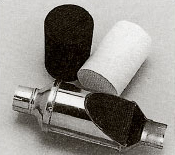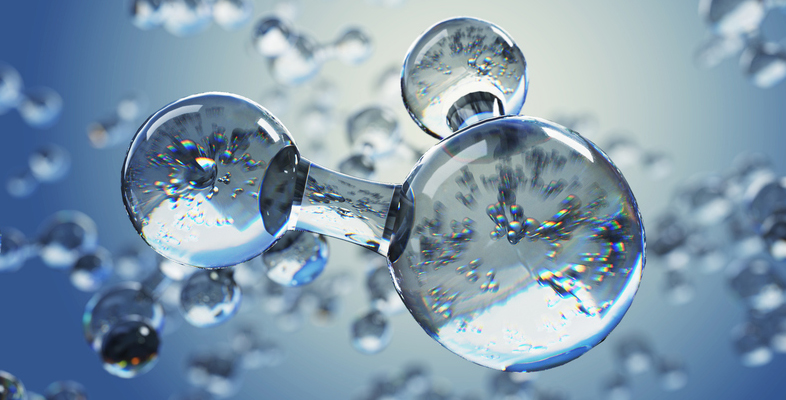2.4 The three-way catalytic converter
Catalysts are substances that speed up reactions without being used up in the reaction. They tend to be very specific and will only change the rate of a particular reaction.
As far as Reaction 1 is concerned, a suitable catalytic material is the metal rhodium.
When NO and CO molecules enter a catalytic converter, they become bound to rhodium surfaces. The attachment of NO to rhodium weakens the bond between the N and O atoms in the molecule, and the NO unit becomes more vulnerable to change.
For example, it is believed that in some cases, the bond is so weakened that the N and O atoms separate completely, and move about on the rhodium surface. Pairs of nitrogen atoms can then meet, combine and leave the surface as N2(g); oxygen atoms can meet and combine with CO molecules on the surface, leaving as CO2(g).
Obviously, this type of reaction pathway is very different from one that takes place entirely in the gas phase with no catalyst present. Most particularly, because the catalyst surface assists the breaking of the bond in the NO molecule, it has a lower energy barrier (see Figure 2) and is much faster.
In a three-way catalytic converter, some 90 per cent of the nitric oxide in the exhaust stream is converted to nitrogen and carbon dioxide. Figure 3 shows an example. The catalyst actually contains rhodium and platinum. The platinum catalyses the reactions of both carbon monoxide and unburnt hydrocarbons (from the petrol) with oxygen, giving carbon dioxide and steam.

The converter is called 'three way' because it removes all three main types of pollutant: nitrogen oxides, carbon monoxide plus unburnt hydrocarbons.
